Thousands of Mohawk canoes have been bought and used by recreational and sports boaters throughout the years. Owners of these canoes claim that they offer the best value at affordable prices. Will a Mohawk Canoe really give you the best value for your money?
Those who have bought and used Mohawk canoes claim that they are good canoes with good accessories and are supported by good service. Owners of these canoes are not afraid to recommend them to others. They also say that these canoes offer the best bargain for entry-level canoers.
The company that built Mohawk Canoes was one of the largest canoe manufacturers in the United States. This company built 20 different kinds of canoes in its manufacturing plant in Longwood, Florida. Its most popular canoe models are the Probe, Odyssey, Shaman, and Viper.
Read on to learn more about Mohawk canoes, the features, specifications of the different models, and reviews of some of these canoe models.
Mohawk Canoes Models and Specs
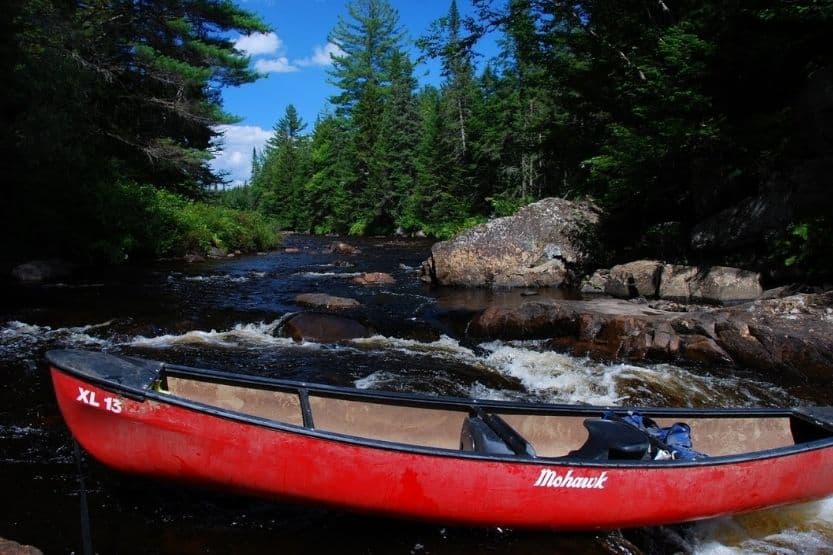
People who have bought and used Mohawk canoe models over the years have testified that these canoes are perfect. They said that these canoes came with good accessories, and the company that built them supported them with good service.
Most of these canoe owners have no qualms in recommending Mohawk canoes to other paddlers. They believe that these canoes offer the best value for their price. It is the best bargain available for those who are just beginning to enjoy canoeing for recreation or sports.
There are 20 different kinds of Mohawk canoe models. They can handle any water condition ranging from calm waters to fast-moving rapids. The most popular models include the following:
- Probe
- Odyssey
- Shaman
- Viper
These models gained canoe lovers’ support because of their high performance and the attention to detail that the company provided.
The canoes made by Mohawk are classified into two general categories. One is the flatwater canoe, and the other is the white water canoe.
Following are two tables that show the different Mohawk canoe models along with their respective specifications: [1]
Flat Water Canoes
| Model | Length | Beam Gunwale/ Waterline | Rocker | Depth Center | Bow/Stern Height | Approx. Weight | Estimated Capacity |
| Solo 13 RX | 13′ | 29 / 30.25″ | 1″ | 12.5″ | 18″ | 41 lbs. | 300 lbs. |
| Solo 13 R84 | 13′ | 29 / 30.25″ | 1″ | 12.5″ | 18″ | 36 lbs. | 300 lbs. |
| Solo 14 RX | 14′ | 29 / 30.25″ | 1″ | 12.5″ | 18″ | 44 lbs. | 375 lbs. |
| Solo 14 R84 | 14′ | 29 / 30.25″ | 1″ | 12.5″ | 19″ | 39 lbs. | 375 lbs. |
| Odyssey 14 RX | 14′ 2″ | 29 / 30.5″ | 1.75″ | 19″ | 19″ | 49 lbs. | 400 lbs. |
| Odyssey 14 R84 | 14′ 2″ | 29 / 30.5″ | 1.75″ | 19″ | 19″ | 49 lbs. | 400 lbs. |
| Odyssey 15 RX | 15′ | 29 / 30.6″ | 1″ | 14″ | 18.5″ | 57 lbs. | 580 lbs. |
| Odyssey 15 R84 | 15′ | 29 / 30.6″ | 1″ | 14″ | 18.5″ | 54 lbs. | 580 lbs. |
White Water Canoes
| Model | Length | Beam Gunwale/ Waterline | Beam 4” Waterline | Rocker | 8” Freeboard | 6” Freeboard | Approx. Weight |
| Maxim | 8’10” | 27″ | 25 1/8″ | 4.5″ | N/A | N/A | 32 lbs. |
| Rodeo | 10’6″ | 26.5″ | 27″ | 5″ | N/A | N/A | 38 lbs. |
| Probe 11 | 11’8″ | 28″ | 27.5″ | 4.5″ | 404 lbs. | 593 lbs. | 45 lbs. |
| Probe 12 | 12’2″ | 27.5″ | 27.5″ | 4.75″ | 485 lbs. | 701 lbs. | 48 lbs. |
| Probe 13 | 12’8″ | 28.5″ | 28″ | 5″ | 498 lbs. | 647 lbs. | 49 lbs. |
| Probe 14 | 14′ | 31″ | 29″ | 6″ | 620 lbs. | 863 lbs. | 59 lbs. |
| Viper 11 | 11’6″ | 27.5″ | 27 1/4″ | 4.5″ | 431 lbs. | 647 lbs. | 45 lbs. |
| Viper 12 | 12’6″ | 27″ | 27.5″ | 5″ | 485 lbs. | 701 lbs. | 49 lbs. |
| XL 13 | 13’3″ | 30″ | 29.5″ | 3″ | 593 lbs. | 836 lbs. | 56 lbs. |
| XL 14 | 14’3″ | 32″ | 30″ | 3″ | 620 lbs. | 909 lbs. | 60 lbs. |
| XL 15 | 15’4″ | 35″ | 32″ | 3″ | 728 lbs. | 1025 lbs. | 65 lbs. |
These boats are still available at some used boat outlets and online stores. The company that built them no longer manufactures these canoes. But they are still available at Craigslist, Shoppok, and other online stores that sell used canoes, kayaks, and boats.
Mohawk Flat Water Canoes
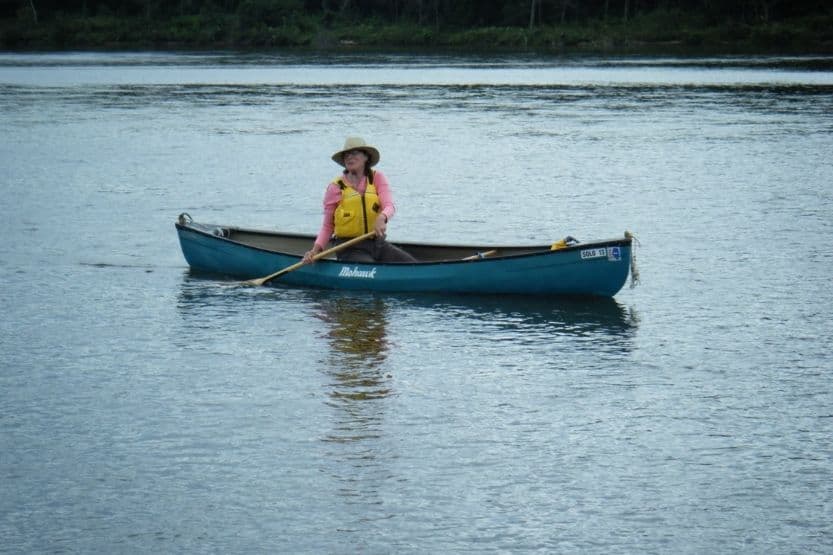
To provide you with a better idea of what Mohawk Flat Water Canoes can offer, here are several reviews of the most popular Mohawk Flat Water canoes. These canoes are designed to be used on calm waters:
Solo 13
The Solo 13 weighs only 40 pounds and has an overall length of 13 feet. You can easily carry it upstream. This canoe also tracks well, even if it is just a small boat. It also very maneuverable and can handle pleasure boat wakes and bass with ease.
While it is not a whitewater canoe, it is agile enough for class 2 and even lower class 3 water. As such, it is a light and short canoe that you can take on most waters. This canoe is great for rivers, zipping through objects. It also handles like a kayak.
Even if it is short, this canoe is still stable on the water. You can even turn it 360° in its full length without so much trouble. There are similar canoes that can do this from other brands, but they cost three times the Solo 13. This is a rugged, inexpensive boat that you won’t regret buying.
Solo 14
The Solo 14 is another flatwater canoe made by Mohawk Canoes. Aside from flat water, you can also use this boat on small winding rivers. Some daring owners have used the Solo 14 for white water and fishing.
With a smaller rocker than the Solo 13, this canoe is best for flat water. It also has less primary stability than many wider canoes. The Solo 14 is not equipped with a keel, but it has a long keel-like line in the water.
This helps it track effectively on open water and still be able to heel for decent maneuverability. Some variants of this model have seats that are mounted flat, while others have angled seats for more comfortable kneeling while canoeing.
The Solo 14 is excellent for beginners as well as the more experienced paddlers. It has high enough seats so you can either sit or kneel whenever you feel like it.
Odyssey 14
The Odyssey 14 is a fast but stable canoe. It can also carry a decent weight of camping gear. This canoe is also relatively tough as some owners found that it can be dragged around or over downed trees floating on water. It is a bit heavier than the Solo 14, so it has limited whitewater capability.
The boat’s stability improves if you will be sitting on the floor. Its handling will also be light and will enable you to get out of trouble easily. Some owners claim that this canoe also tracks well. They use it both on open water and congested swamps. It performs well in flowing water and can easily turn on a dime in tight situations.
Mohawk White Water Canoes
Mohawk’s white water canoes are designed for speed. Here are some of the most popular canoes on this canoe line, together with their features.
Maxim
The Maxim is a short boat with only a length of 8 feet and 10 inches. It has a considerably flat planning hull making it very fast and agile. This canoe has a moderate rocker and full-length chines that run from bow to stern. It is really a very easy boat to paddle.
This is the boat that will easily rip the steeps to pieces. It can also handle the creeks, so you can also use it for paddling big water. No matter what type of water you get in, this boat will keep you dry because of its deep bow and stern.
While this canoe wants primary stability, it more than makes it up with its secondary stability. The Maxim can play and surf with other brands’ best canoes, and it won’t be left behind.
Mohawk Rodeo
The Mohawk Rodeo is made of Royalex material with new Kevlar skids. It comes with a waist belt and a factory-fitted saddle. The length of this canoe is 10.5 feet. This boat has great secondary stability. That means it will provide you stability even when the water makes it tilt once in a while.
Probe 11
The Probe 11 is a great little boat that is not so fast or so slow but is more on the median side of speed. It is just under 12 feet, rolls with ease, plays, and surfs well so long as you lean and stay back so that the bow will not dive into the water.
This canoe is also very maneuverable and performs well on twisty, small, and class II and class III glasses of water. For a short boat, it surprisingly will not get you wet. Bigger boaters may feel edgy on this canoe, but it provides great stability for smaller paddlers.
This canoe can also run big water. It could be tricky, and you can get wet, but it can handle large water. Its hull can also hold up during encounters with big rocks and class IV waters.
Viper 11
The Viper 11 offers excellent maneuverability and good speed. It also offers exceptional primary and secondary stability. But it might be a little wet compared to canoes that are 9 to 10 feet long. This canoe is great in creek runs. It will feel at home in rivers like the Chattooga IV.
Viper 12
The Viper 12 can catch eddies as if they are just small than they are. You can paddle it from the stern, and it won’t throw you. But if you really want to feel its responsiveness, paddle it from the bow.
This boat comes with comfortable single-strap outfitting, which you can easily adjust to your liking. It has ample room for storage for your gears as well as your canoeing buddies. This boat has a better glide, and it will take fewer strokes to ride a wave or get in a hole.
Compared to the Viper 11, the Viper 12 is drier but a bit edgier. It is also more stable whether it’s empty or full of water.
XL 13
The Mohawk Canoe model XL 13 can run on class II, class III, and even class IV waters. It is also very durable. Some of its accessories may last for years. Learning the basics of paddling is easy with this boat.
Its hull can hold up with the occasional rock bumps. It is also a solid runner in the river. This boat is heavy but quite stable. For a boat with rocker, it really tracks reasonably well. It’s a great starter canoe for a heftier paddler because it is long and wide.
About Mohawk Canoes
Darell Leidigh established mohawk Canoes in 1958. He moved to Orlando, Florida, and began building pontoon boats. Moreover, six years later, he ventured on building his famous Mohawk Canoes.
Popular Canoe Models
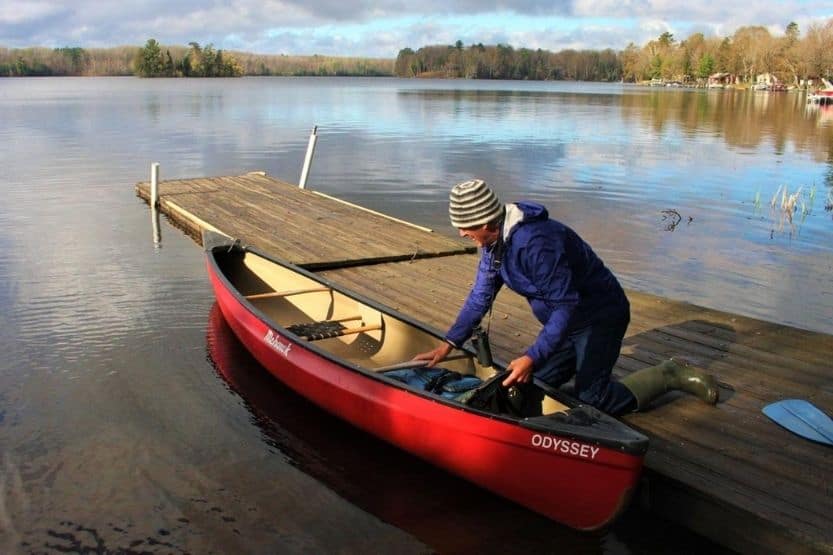
His canoes became popular and became successful later on. Leidigh’s company eventually became one of the largest builders of canoes in the United States. Moreover, the most popular canoe models he sold were the Odyssey, Viper, Probe, and the Shaman. His attention to detail and his canoes’ high performance were the keys to his success as a canoe builder.
Height of Success
At the height of his success as a canoe manufacturer, Leidigh turned out 20 different Mohawk Canoe models. Furthermore, these models have their own unique features, specs, and accessories that distinguish them from each other.
Leidigh’s company sold his canoes through boat dealers, boat rental companies, and directly to individual customers. Along with his boats, his company also sold several boat accessories. These include the following:
- Vests
- Jackets
- Helmets
- Rescue ropes
- Airbags
- Foam saddles
- Center seats
- Paddles.
Leidigh estimated that there were about 2,500 canoes that he was able to build every year. Along with that, he also estimated that they were making around 50,000 paddles each year. Unfortunately, this success story has already come to an end. Mohawk Canoes are no longer building canoes.
At one point in time, the company that supplied the raw material to Mohawk Canoes stopped its operations. Royalex, the material commonly used for building canoes, was no longer available. This is perhaps one reason why Mohawk ceased its operation as well.
But many used canoes that this company has built are still available at certain online outlets like Craigslist and Shoppok. Thus, if you are convinced that this boat is a good buy, you can get the particular model you like from one of these outlets.
Conclusion: Mohawk Canoes
Owners of Mohawk canoes who have used them on the water for years claim that they are good canoes that come with good accessories. They are also ably supported by good service. These Mohawk Canoe owners are not shy in recommending these canoes to other paddlers. Lastly, they believe that these canoes offer the best bargain for entry-level canoe enthusiasts.
Again, here are your Mohawk Flat Water Canoes options:
- Solo 13
- Solo 14
- Odyssey 14
As for White Water Mohawk Canoes, here’s a list of your options:
- Maxim
- Mohawk Rodeo
- Probe 11
- Viper 11
- Viper 12
- XL 13
There you go! If you’re interested in getting one of Mohawk canoes, you can still get them online!
Related reading:
Coleman Scanoe Specs and Review
Aluminum Canoe Pros and Cons, Weight, and Is It Better than Fiberglass?


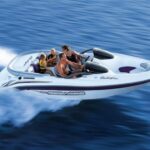
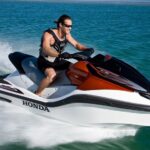

![Seaswirl Boats [What Are They? and Top Seaswirl Models] seaswirl](https://boatinggeeks.com/wp-content/uploads/2021/07/seaswirl-150x150.jpg)
![Boundary Waters Canoe Area Wilderness [Activities, Routes, Permits] boundary waters canoe area](https://boatinggeeks.com/wp-content/uploads/2021/07/boundary-waters-canoe-area-150x150.jpg)
![Read more about the article Kayak Weight Limit [What Size Do You Need for Your Weight]](https://boatinggeeks.com/wp-content/uploads/2021/04/kayak-weight-limit-300x200.jpg)

![Read more about the article Boundary Waters Canoe Area Wilderness [Activities, Routes, Permits]](https://boatinggeeks.com/wp-content/uploads/2021/07/boundary-waters-canoe-area-300x200.jpg)